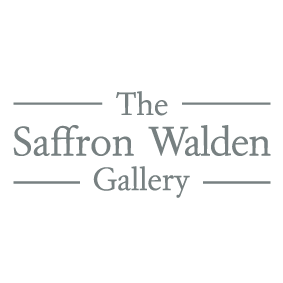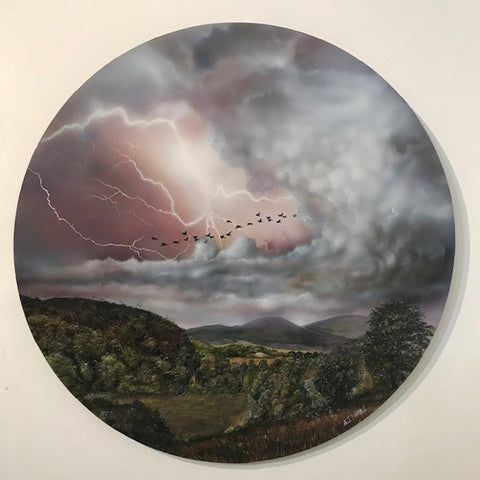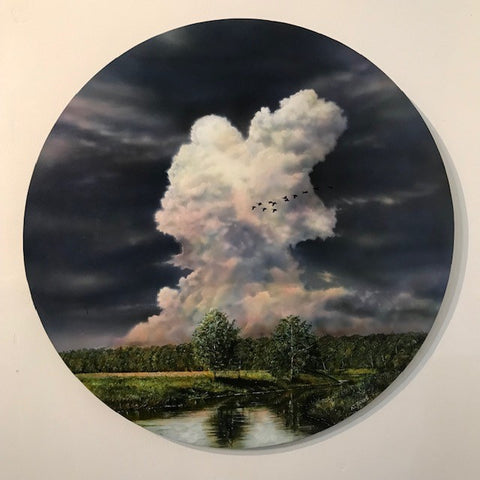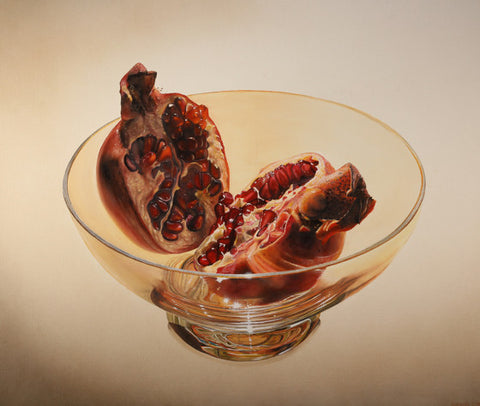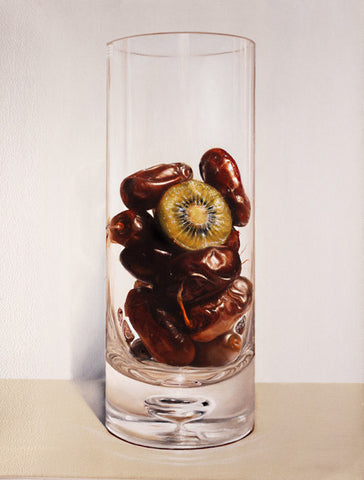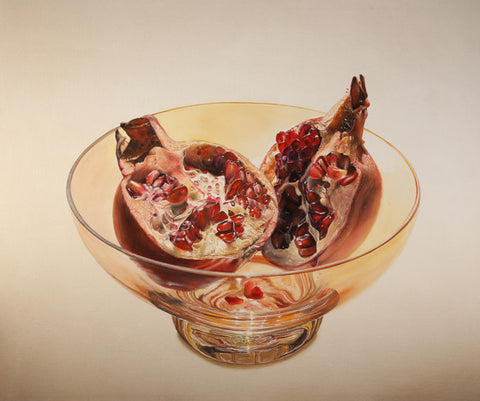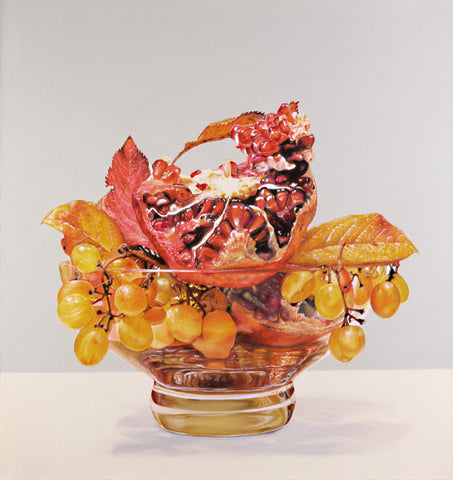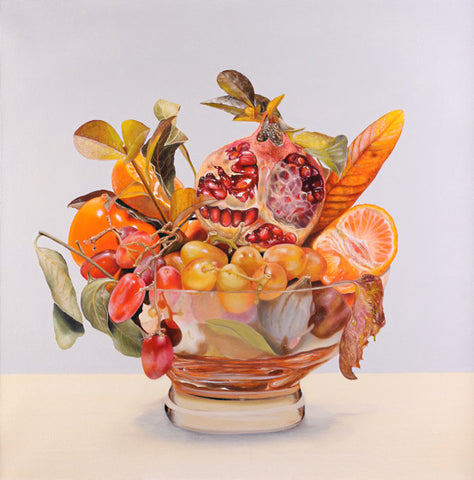Anthony J Parke
Anthony J Parke is a British artist, born in London, in 1964. He uses a combination of classical and hyperrealist styles.
Anthony studied fine art at Kingston Polytechnic and went on to complete a masters in English Literature.
Anthony has long held a fascination for the preserved wet specimen collections at the Natural History Museum, for the curious world of taxidermy, for amber and its capacity to halt the disintegration of creatures from millennia past. Of equal interest has been the grace and form of the female form, for the translucent properties of the human face; also too, for the delicate minutiae within organic materials: be it the fractal veins of leaves, or the glistening seeds of pomegranates.
Glass is the common denominator in much of Parkes work. The raison d'être for this imagery relates specifically to his early childhood with his brother who suffered from mental illness. There was much destructive turmoil surrounding this period, which has greatly informed his work.
From a very early age his brother destroyed all things related to glass: windows, mirrors, ashtrays, vases, light bulbs, televisions, the family aquarium, etc. Glass became symbol of destruction of beauty. But Anthony seeks to invert this meaning in his work.
Now, glass vessels act as a metaphorical means of capturing and preserving objects of beauty. Like specimen jars at the Natural History museum preserve organic forms, his 'jars' preserve objects of beauty.
Parke’s work is held in private collections in the USA, Canada, England, Russia and Belgium. Most notably in the private collection of Sir Gabrielle Tolkowsky, L'Ordre of Knights, who cut the Centenary diamond for the Queen of England as well as the glorious Jubilee diamond. Sir Gabrielle wrote of his work: 'His paintings are always combined with joyful colours, filled with a beautiful gift: the presence of light!'
